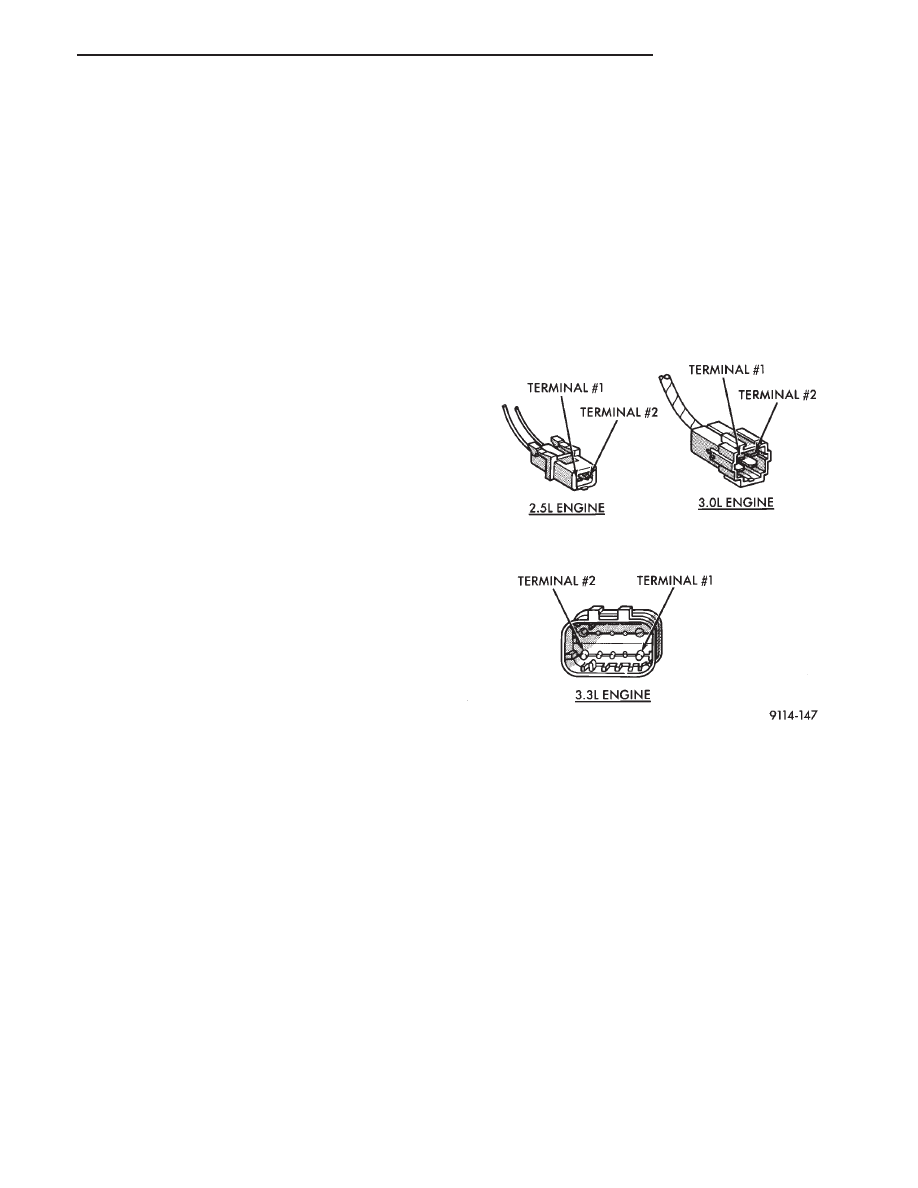Chrysler Town & Country/Voyager, Dodge Caravan, Plymouth Voyager. Manual - part 14

FUEL DELIVERY SYSTEM
INDEX
page
page
Chassis Fuel Tubes
. . . . . . . . . . . . . . . . . . . . . . . 11
Fuel Filter—All Wheel Drive
. . . . . . . . . . . . . . . . . 11
Fuel Filter—Front Wheel Drive
. . . . . . . . . . . . . . . 10
Fuel Hoses, Clamps, and Quick Connect Fittings
. . 3
Fuel Pump Module Installation—All Wheel Drive
. . 10
Fuel Pump Module Removal—All Wheel Drive
. . . . 9
Fuel Pump Pressure Test—2.5L and 3.0L Engines
. 5
Fuel Pump Pressure Test—3.3L Engine
. . . . . . . . . 6
Fuel Pump/Level Sending Unit Assembly
Removal—Front Wheel Drive
. . . . . . . . . . . . . . . 8
Fuel Pump/Level Unit Assembly
. . . . . . . . . . . . . . . 5
Fuel Pump/Level Unit Assembly Installation—Front
Wheel Drive
. . . . . . . . . . . . . . . . . . . . . . . . . . . . 9
Fuel System Pressure Release Procedure
. . . . . . . 3
General Information
. . . . . . . . . . . . . . . . . . . . . . . . 3
GENERAL INFORMATION
The front wheel drive van and the all wheel drive van have
different fuel delivery systems. The front wheel drive van
uses a metal fuel tank mounted in the rear of the vehicle. The
all wheel drive van has a plastic fuel tank located on the left
side of the vehicle. The fuel pumps and the chassis fuel tubes
used on front wheel drive vans are different from those used
on all wheel drive vans.
Both the front wheel drive and all wheel drive fuel pump
modules have an internal fuel reservoir, a fuel level sending
unit, and a fuel strainer mounted on the pump housing. Both
systems use quick connect fittings at the fuel tank and
engine. The fuel filter location is the same for both front
wheel drive and all wheel drive vehicles.
FUEL SYSTEM PRESSURE RELEASE PROCEDURE
(1) Loosen fuel filler cap to release fuel tank pres-
sure.
(2) Disconnect injector wiring harness from engine
or main harness.
(3) Connect a jumper wire from terminal Number 1
(ground) of the injector harness (Fig. 1) to engine
ground.
(4) Connect one end of a jumper wire to terminal
Number 2 (positive) of the injector harness (Fig. 1).
Connect the other end to the positive post of the
battery for no longer than 5 seconds. This releases
system pressure.
(5) Remove jumper wires.
(6) Continue fuel system service.
FUEL HOSES, CLAMPS, AND QUICK CONNECT
FITTINGS
HOSES AND CLAMPS
Inspect all hose connections (clamps and quick con-
nect fittings) for completeness and leaks. Replace
cracked, scuffed, or swelled hoses. Replace hoses that
rub against other vehicle components or show sign of
wear.
Fuel injected vehicles use specially constructed
hoses. When replacing hoses, only use hoses marked
EFM/ EFI.
When installing hoses, ensure that they are routed
away from contact with other vehicle components that
could rub against them and cause failure. Avoid contact
with clamps or other components that cause abrasions
or scuffing. Ensure that rubber hoses are properly
routed and avoid heat sources.
The hose clamps have rolled edge to prevent the
clamp from cutting into the hose. Only use clamps that
are original equipment or equivalent. Other types of
clamps may cut into the hoses and cause high pressure
fuel leaks. Tighten hose clamps to 1 N
Im (10 in. lbs.)
torque.
QUICK CONNECT FITTINGS
Some fuel lines have quick connect fittings. The
fittings are designed to speed up the installation and
removal of the fuel lines (Fig. 2).
Quick connect fittings consist of a metal casing, a
Fig. 1 Injector Harness Connectors
.
FUEL SYSTEM
14 - 3